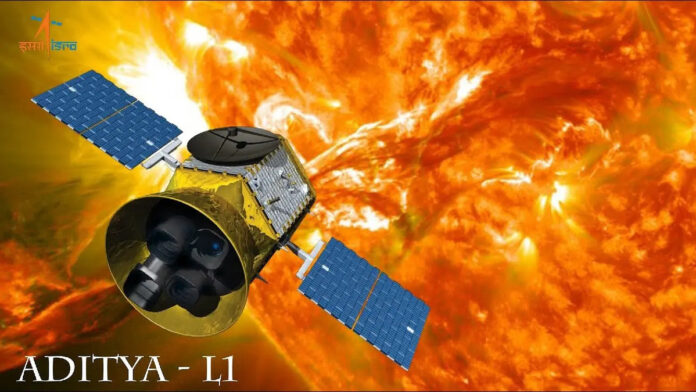India’s space agency has scheduled its next mission Aditya-L1, which would include solar research, after the success of the Chandrayaan-3 moon landing.
This week, as scientists and crew celebrated the successful completion of the moon mission, ISRO announced to reporters at its satellite command center that the Aditya-L1, India’s first space observatory for solar research, is getting ready for launch at the country’s main spaceport in Sriharikota.
ISRO chairman S. Somanath has said, “We are planning to launch in the first week of September.”
What plans does Aditya-L1 have?
The spacecraft is India’s first solar probe in orbit, and its name comes from the Hindi word for the sun. The “auroras” observed from Earth are really caused by solar winds, which scientists want to learn more about.
In the long run, the mission’s data might provide light on how the sun affects Earth’s climate.
To better understand where solar wind comes from, scientists have recently reported that the European Space Agency/NASA Solar Orbiter spacecraft has discovered multiple very modest jets of charged particles emitted intermittently from the corona, the sun’s outer atmosphere.
What is its range?
The PSLV is India’s most powerful launch vehicle, and it will carry the Aditya-L1 spacecraft on its 1.5 million kilometer journey to the sun’s atmosphere in roughly four months.
The spaceship will save fuel by traveling to a “parking lot” in space, where items prefer to remain due to balancing gravitational pulls.
The Italian-French mathematician Joseph-Louis Lagrange is honored by the naming of these locations as Lagrange Points.
What is the price tag for this endeavor?
The budget for the Aditya-L1 mission was approved in 2019 at about Rs. 380 crore (about $46 million). There has been no confirmed price increase from ISRO.
Executives and planners believe India’s newly privatized space sector would benefit from the Indian Space Agency’s (ISRO) reputation for cost competitiveness in space engineering.
Costing close to Rs. 620 crores (almost $75 million), the Chandrayaan-3 mission successfully landed a spacecraft on the lunar south pole.

